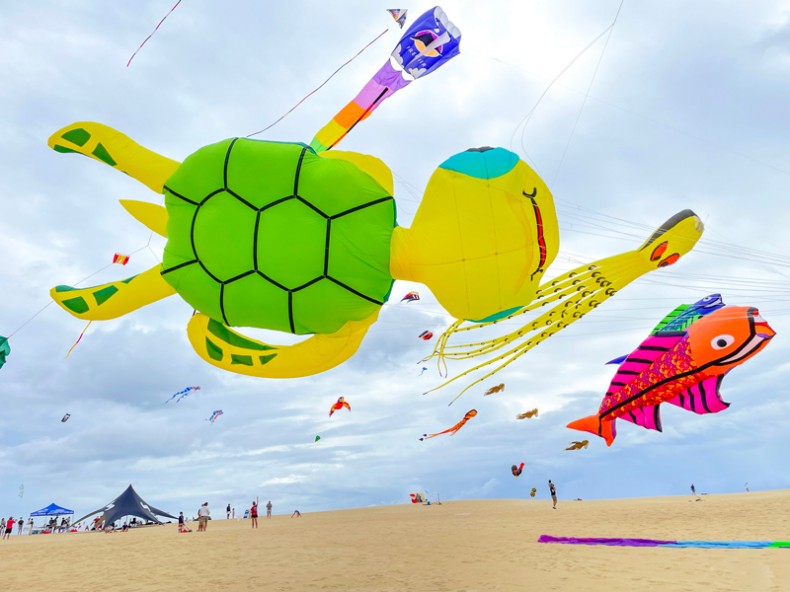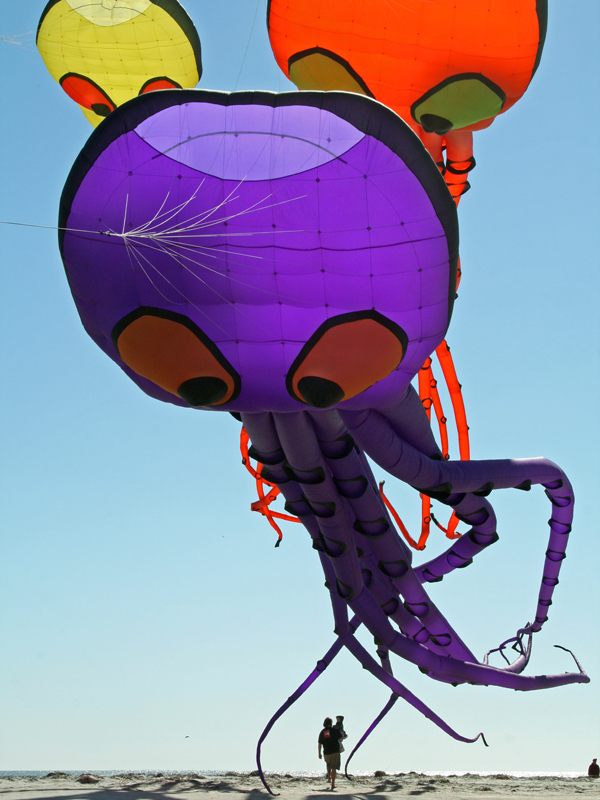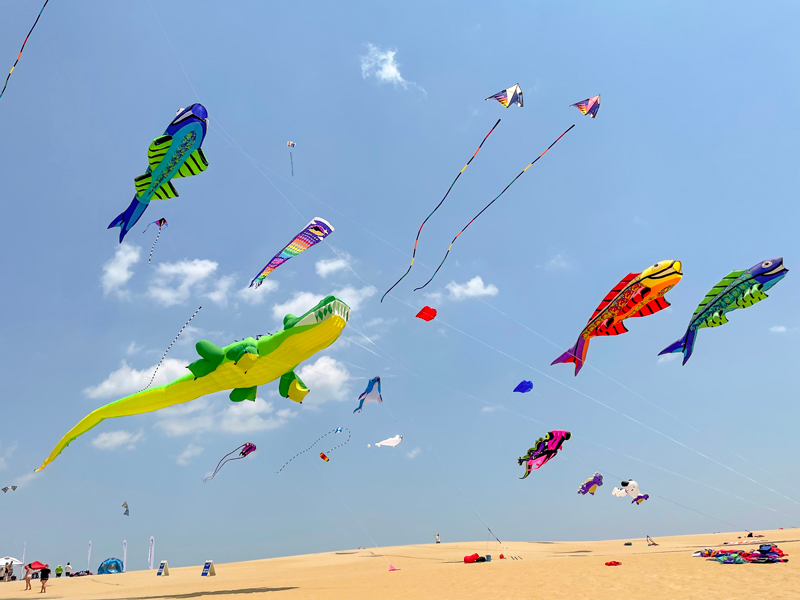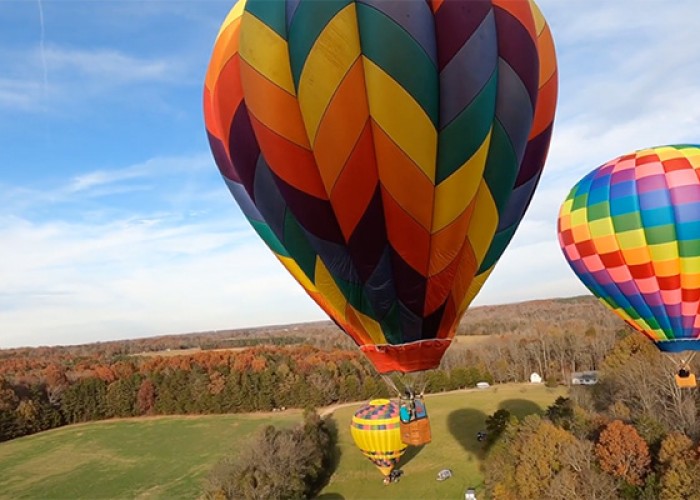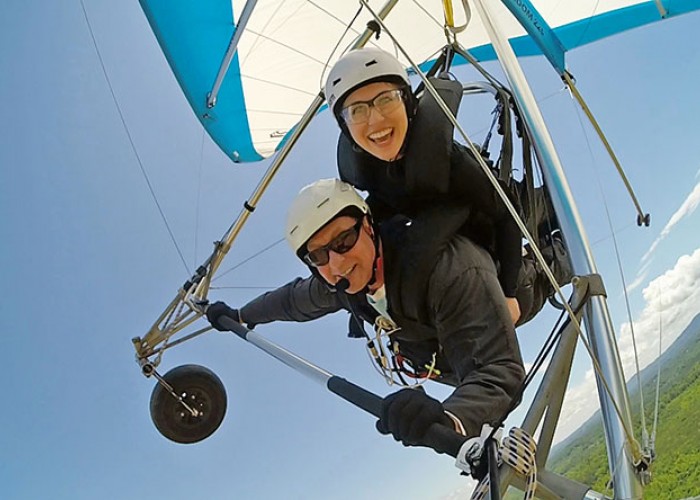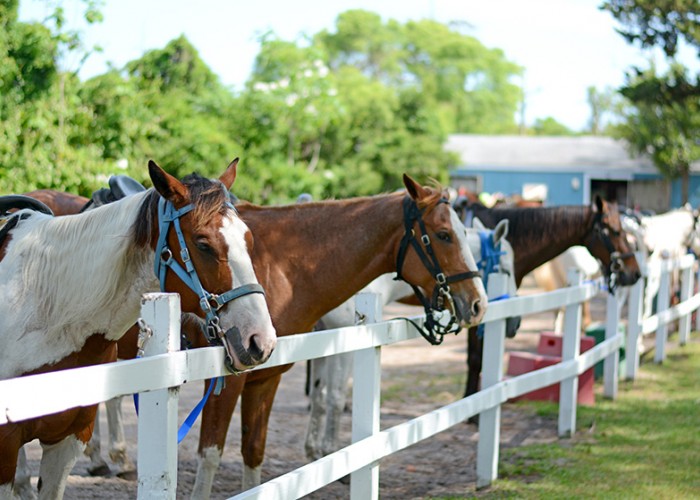Go Fly a Kite
Fair winds blow for North Carolina kite fliers
By Joan WennerKitty Hawk Kites
As the outdoors beckons, the age-old popular pastime of kite flying and the art of making them emerges. Where there’s wind, there are colorful kites able to fly. It is an activity almost anyone can do (and if you tell someone to “go fly a kite,” you won't be punished). Plus being in and enjoying the fresh air is something that virtual reality and avatars so far can’t match.
From the simple to the highly intricate, kites can be seen all around North Carolina — pretty much year-round, though more so from April (officially National Kite Flying Month) through October — and are a sight to behold at organized festivals or gatherings at many state and local parks.
Kite basics
The American Kitefliers Association (AKA) says for adults and kids to build a successful kite, focus on creating a structure that is both strong enough and light enough to fly in a variety of wind conditions, while also paying attention to attributes like balance, bridling, wind speed and turbulence.
Some kites will fly better than others in particular wind conditions, which is why there are a variety of designs. At beaches, for instance, the air above the land gets heated faster and starts rising with signs of low pressure created, according to the association.
The best weather for kite flying is a good clear wind coming from behind— light breezes (4–10 miles per hour) are ideal. High-altitude meadow winds are desireable, too. North Carolina has an abundance of kite-friendly conditions at its beaches, mountains and Piedmont areas, perfect for everyone to hone their kite flying skills.
Get airborne
Kites for children of different ages can be made or kite kits purchased (see kittyhawk.com for some examples).
AKA’s publication “Kiting” offers kit plans, and its website (kite.org) lists more than a dozen plans and instructions for free. For example, there is a simple paper butterfly kite, and a trash bag kite that couldn’t be easier. All you need are “two sticks, a bag, string and scissors, and you have a kite!”
Kites through the ages
- The first kites may have been constructed by cultures in Malaysia, Indonesia and the South Pacific as fishing instruments made of natural materials like leaves and reeds, according to AKA.
- In 450 B.C., a Chinese philosopher carefully crafted a wooden bird to “fly” on a tethered line. (There is some debate whether this is considered a true kite, and early written accounts point to earlier kite flying in China, in 200 B.C.)
- Kites increased in popularity in the 18th century, and were also utilized by physicists and meteorologists for scientific purposes (including Benjamin Franklin).
- The Wright Brothers (who were said to be very skilled at flying kites), discovered box kites provided enough lift to raise a man off the ground and built a box biplane. The rest, as is often said, is history.
About the Author
Joan Wenner, J.D. is a longtime boating and general interest topic writer residing in Pitt County. Comments welcome at joan_writer@yahoo.com.-
More summer fun
-
Share this story:

